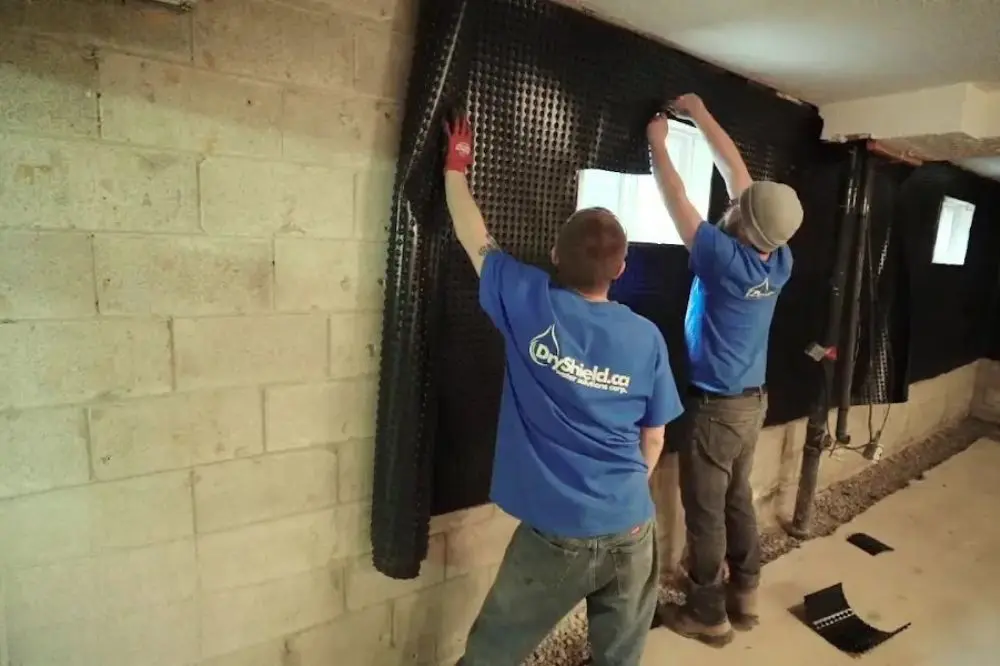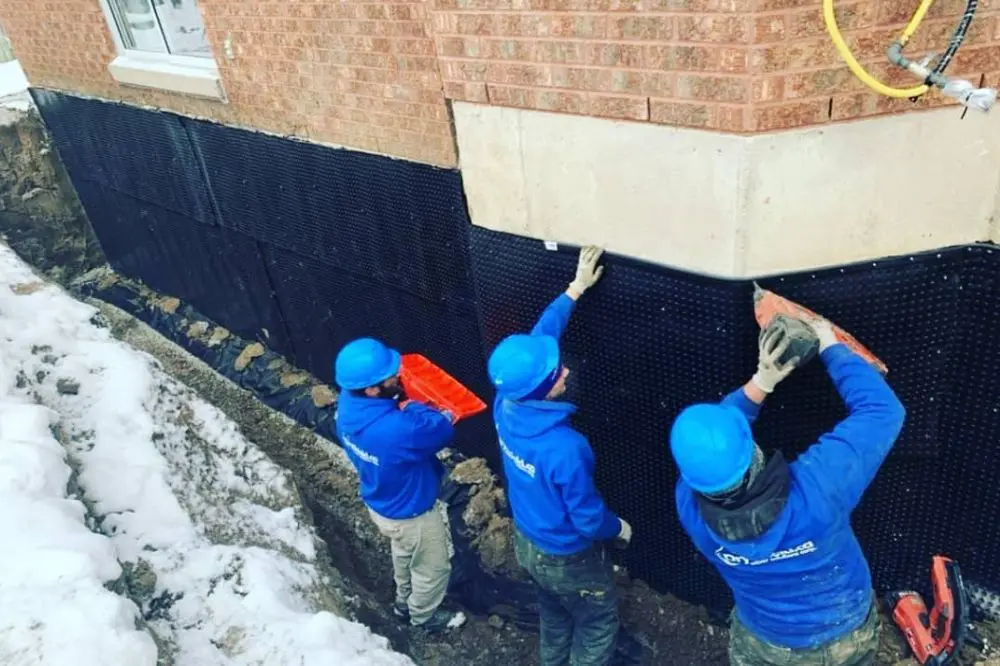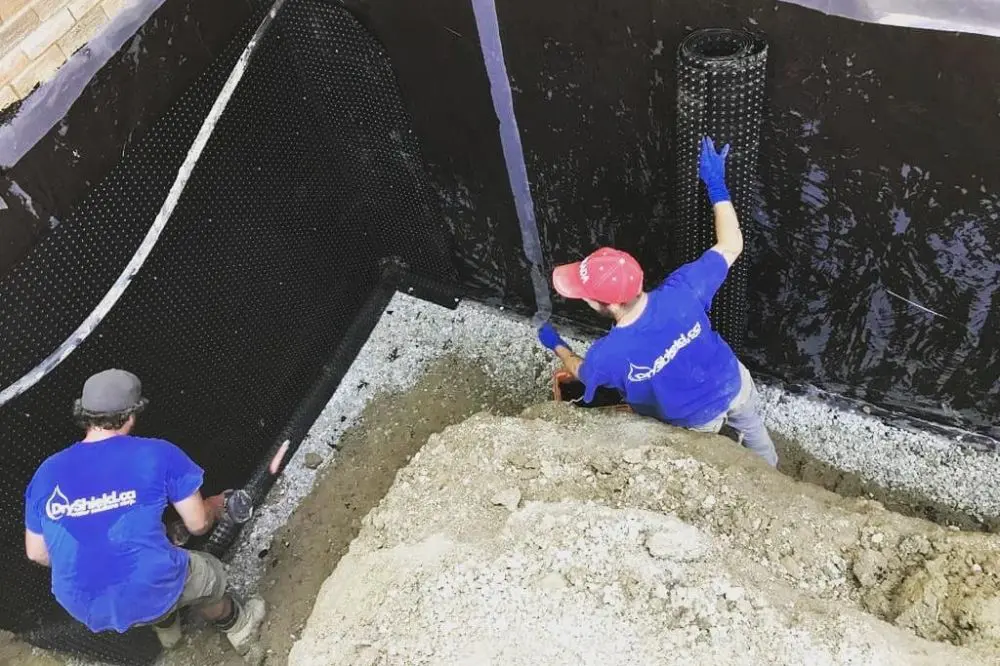A dry basement is essential for keeping a home safe, stable, and comfortable. In Toronto, heavy rainfall, melting snow, and seasonal temperature changes can push moisture into the ground around a property. Over time, this can place pressure on the basement walls and floor, leading to cracks, leaks, and potential foundation issues.
Water intrusion in a basement is not just inconvenient — it can cause damage to the building structure, reduce property value, and even create health concerns due to mould growth. Taking steps to prevent it is far more cost-effective than dealing with major repairs after the fact.
If you are looking for options to protect your home, basement waterproofing is a proven way to stop water infiltration and keep your foundation in good condition.
Toronto Basement Waterproofing Methods
There is no single waterproofing method that works for every property. A professional contractor will inspect your basement to find the source of the water problem and then recommend the right approach. In Toronto, these are the most common methods used to keep basements dry.
- Interior Drainage Systems
An interior drainage system is installed along the inside perimeter of the basement floor. Perforated pipes collect any water that enters and direct it to a sump pump. The sump pump then expels the water outside, away from the house. This method is relatively quick to install and works well for managing water that has already penetrated the foundation. However, it does not prevent moisture from touching the outside walls.
- Exterior Waterproofing
Foundation waterproofing from the outside prevents water from entering in the first place. This involves excavation around the foundation, cleaning and repairing the exterior walls, and applying a waterproof membrane. Drainage boards may be added to direct water toward a footing drain. This method provides long-term protection but is more labour-intensive and typically costs more.
- Crack Injection
If the main issue is a visible crack in a poured concrete wall, a crack injection may be the right fix. This method uses epoxy or polyurethane materials injected directly into the crack. The material expands to fill the gap and block water from entering. Crack injection can be a quick and targeted repair, but if water is entering from other points or the crack is a sign of larger structural movement, additional waterproofing may be needed.
- Sump Pump Installation
A sump pump is installed in a small pit (sump basin) at the lowest part of the basement floor. As water collects in the pit, the pump activates and pushes it outside through a discharge pipe. Sump pumps are especially important in neighbourhoods prone to flooding or where the water table is high. Adding a battery backup pump can provide extra protection during power outages caused by storms.
- Drainage Improvements Around the Home
Sometimes, preventing water issues starts outside the basement. Improving grading so that the ground slopes away from the home can make a big difference. Extending downspouts so rainwater is discharged at least two metres from the foundation and keeping gutters clear of debris will also reduce the amount of water pooling near basement walls.
How Much Does Toronto Basement Waterproofing Cost?
Basement waterproofing costs in Toronto can vary significantly based on the method used, the size of the basement, and the extent of repair work required.
Typical price ranges include:
- Interior waterproofing: CAD $70 – $150 per linear foot
- Exterior waterproofing: CAD $100 – $250 per linear foot
- Crack repair: CAD $500 – $1,500 each
- Sump pump installation: CAD $1,000 – $3,000
You can use an online basement waterproofing cost calculator to estimate your potential expenses before contacting contractors.
When choosing between options, remember that Toronto basement waterproofing should be seen as a long-term investment in your home’s durability. Cheaper work may not last and can lead to higher costs later.
Interior vs Exterior Basement Waterproofing in Toronto
The choice between interior and exterior solutions depends on the source of the problem and the homeowner’s goals.
- Interior waterproofing is generally quicker and less disruptive. It works well for controlling leaks or dampness that has already entered.
- Exterior waterproofing stops water before it reaches the basement walls, providing a stronger long-term solution.
For more information, you can explore interior vs exterior basement waterproofing Toronto comparisons to see which option fits your property’s needs.
What Mistakes to Avoid for Basement Waterproofing
Even with the best intentions, homeowners sometimes make decisions that reduce the effectiveness of their waterproofing efforts. Here are the most common mistakes to avoid:
1. Delaying Repairs
Ignoring a small leak or damp spot might seem harmless, but over time, water will make its way deeper into the structure. Early repairs are always less expensive than dealing with major damage later.
2. Only Using Paint or Sealant
Paint-on waterproof coatings can help with mild dampness, but won’t stop water that’s under pressure. Unless the source is addressed, the problem will recur.
3. Ignoring Exterior Drainage
If the land slopes toward your home, or if gutters and downspouts are blocked, water will collect near your foundation. This creates constant pressure against the basement walls.
4. Choosing the Wrong Method
Water problems differ from home to home. Crack injection might work for one property but be useless for another with groundwater seeping up through the floor.
5. Hiring Based Only on Price
A low quote may look good, but it often means fewer steps are taken or cheaper materials are used. Always check a contractor’s references and track record before hiring.
6. Overlooking Maintenance
Systems like sump pumps need regular testing, and drains need cleaning. Neglecting maintenance can mean your system fails when you need it most.
7. Skipping Professional Assessment
Getting a professional inspection can save you thousands in the long run. In many cases, the Toronto basement leak repair cost is far less when the issue is found early.
Conclusion
Basement waterproofing protects against water intrusion, preserves the structural integrity of your home, and prevents expensive future repairs. The right solution will depend on where the water is coming from and the condition of your property.
Whether it’s interior drainage, exterior waterproofing, or a combination of methods, investing in proper protection is essential for Toronto homeowners. For expert inspection and tailored solutions, Dryshield Waterproofing Toronto provides services designed to keep basements dry year-round.




